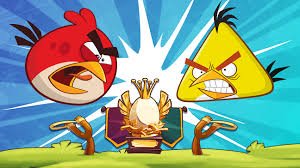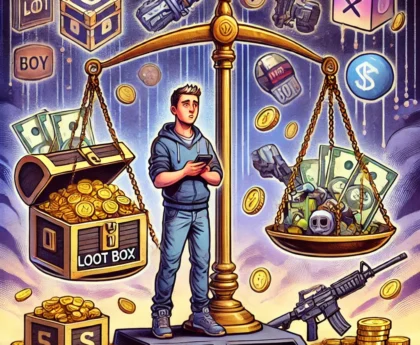Angry Birds is one of the most iconic mobile games in history, revolutionizing the mobile gaming industry upon its release in 2009. Developed by Finnish game developer Rovio Entertainment, the game became a global phenomenon, attracting millions of players worldwide. However, over the years, the game experienced a decline in popularity, partly due to market saturation, shifting player preferences, and increased competition. Let’s explore the rise and fall of Angry Birds in detail.
Critical Question – Why a Game fails?
The Rise of Angry Birds
1. Initial Success and Innovation
• Launch and Viral Spread:
Angry Birds launched in December 2009 for iOS and quickly became a viral sensation. Its simple yet addictive gameplay, where players use a slingshot to launch birds to knock down structures and defeat pigs, provided a fresh and enjoyable experience that resonated with a wide audience.
• Accessibility and Platform Expansion:
The game was initially a mobile-exclusive but later expanded to other platforms like Android, Windows Phone, and even consoles. Its availability on multiple devices contributed to its widespread popularity.
• Strategic Gameplay:
Angry Birds combined physics-based puzzles with strategic problem-solving. Players had to think carefully about angles, power, and timing to defeat their enemies, creating a highly engaging and rewarding experience.
2. Cultural Impact and Merchandise Boom
• Massive Popularity:
Angry Birds quickly became a cultural phenomenon, with millions of downloads within the first few months of its release. Its birds and pig characters became instantly recognizable, leading to merchandise, toys, clothing, animated series, and even a feature-length film.
• Global Reach:
The game’s appeal transcended geographical boundaries, with localized versions released in various languages and tailored for different markets. This global approach helped maintain its status as a mainstream hit.
3. Monetization and Expansion
• Freemium Model:
Rovio adopted a freemium model, offering a free version with optional in-app purchases for additional levels, characters, and power-ups. This strategy helped maintain player engagement while generating significant revenue.
• Sequels and Spin-offs:
Following the success of the original Angry Birds, Rovio released sequels and spin-offs like Angry Birds Seasons, Angry Birds Space, Angry Birds Rio, and Angry Birds Star Wars. These iterations introduced new gameplay mechanics and characters, expanding the game’s appeal further.
The Decline and Fall of Angry Birds
1. Market Saturation and Competitiveness
• Increased Competition:
As the mobile gaming industry grew, more games emerged offering similar or even more advanced physics-based puzzle experiences. Games like Cut the Rope, Candy Crush, and Clash of Clans gained traction, overshadowing Angry Birds.
• Declining Unique Appeal:
Players began to seek out more sophisticated and diverse gameplay experiences. Angry Birds, while fun, became perceived as repetitive and lacking the innovation that had initially set it apart.
2. Monetization Fatigue
• Over-Reliance on In-App Purchases:
As Angry Birds transitioned into a freemium model, players became fatigued with the constant need for in-app purchases to progress. This led to dissatisfaction, especially when other games offered comparable experiences without the pressure of frequent microtransactions.
3. Fragmentation and Loss of Cohesion
• Multiple Versions and Spin-offs:
While sequels helped maintain relevance, the sheer number of spin-offs and variations made Angry Birds seem fragmented. Players were overwhelmed by the number of options, making it harder for any single version to stand out.
• Shifting Focus:
Rovio’s broader strategy of focusing on merchandise, movies, and collaborations with other franchises shifted attention away from improving the core gameplay, which further diluted the game’s identity.
4. Changes in Player Preferences
• Rise of Social and Competitive Games:
The mobile gaming landscape saw a shift toward social, competitive, and real-time multiplayer games. Players began to prefer experiences that offered deeper interaction and faster-paced action, moving away from single-player puzzle games like Angry Birds.
5. Loss of Market Position
• Decreasing Downloads and Revenue:
As the mobile gaming market became increasingly saturated with similar titles, Angry Birds struggled to retain its dominant position. Download numbers and in-app purchase revenues started declining, signaling a drop in overall popularity.
Conclusion
Angry Birds was a groundbreaking title that revolutionized mobile gaming in its heyday. Its simplicity, innovation, and broad appeal catapulted it to immense popularity. However, as the market evolved, Rovio’s over-expansion into sequels, merchandise, and spin-offs, combined with the rise of more sophisticated games, led to its decline. While still a beloved brand, Angry Birds faces challenges in recapturing the magic of its early success amidst a highly competitive mobile gaming landscape.




